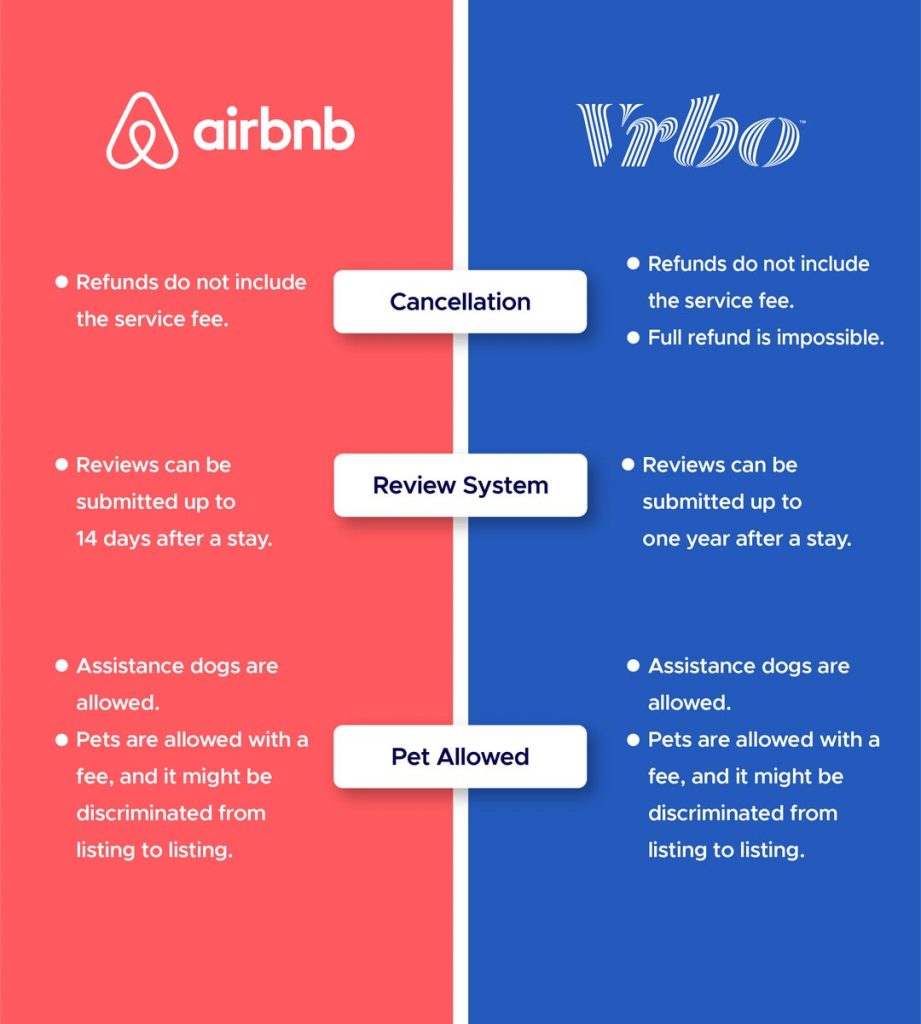Key Takeaways
Pet-friendly rentals can significantly increase your booking rates by attracting pet owners.
Allowing pets may lead to higher revenue potential through additional fees and longer stays.
Potential downsides include property damage and increased cleaning requirements.
Implementing clear pet policies and charging pet fees can mitigate many issues.
Legal requirements must be met for service animals, which cannot be refused.
Growing Demand for Pet-Friendly Rentals
In recent years, the demand for pet-friendly vacation rentals has surged. Many travelers now consider their pets as part of the family and prefer to bring them along on trips. This trend has led to an increase in the number of properties that welcome pets, providing a competitive edge for those who choose to do so.
Most importantly, accommodating pets can help you tap into a niche market of pet owners who are often willing to pay a premium for the convenience. Besides that, happy guests are more likely to leave positive reviews and return for future stays.
“Airbnb vs Vrbo: 9 Essential Factors …” from zeevou.com and used with no modifications.
Deciding Whether to Allow Pets: Key Considerations
Before deciding to make your Airbnb pet-friendly, it’s essential to weigh the pros and cons. Consider the potential benefits, such as increased bookings and revenue, against the possible downsides, like property damage and noise complaints. Here are some key factors to think about:
The size and type of your property
Your willingness to handle additional cleaning and maintenance
The preferences and tolerance of your neighbors
Local regulations and insurance implications
Pros of Making Your Airbnb Pet-Friendly
Increased Bookings from Pet Owners
One of the most significant advantages of allowing pets in your vacation rental is the potential for increased bookings. Pet owners often struggle to find accommodations that welcome their furry friends, making your pet-friendly property highly attractive.
“Stand out from the competition and reach a new audience → increase your bookings”
By offering a pet-friendly rental, you can attract a broader audience and fill your calendar more consistently.
Higher Revenue Potential
Another benefit of allowing pets is the opportunity to charge higher rates. Many pet owners are willing to pay extra for the convenience of bringing their pets along. You can implement pet fees and deposits to cover any additional cleaning or potential damages.
For example, you might charge a $50 pet fee per stay and a refundable $200 pet deposit. These fees not only increase your revenue but also help cover any extra costs associated with hosting pets.
Longer Stays and Return Guests
Pet-friendly rentals often attract guests who stay longer and return for future visits. When travelers find a place that accommodates their pets, they’re more likely to book extended stays and become repeat customers. This loyalty can lead to a more stable and predictable income stream.
Standing Out in the Market
In a competitive vacation rental market, standing out is crucial. Offering a pet-friendly property can set you apart from other listings and make your rental more appealing to a specific niche of travelers. This unique selling point can lead to higher occupancy rates and better overall performance.
Cons of Allowing Pets in Your Vacation Rental
Potential Damages to Property
One of the primary concerns for hosts considering a pet-friendly policy is the risk of property damage. Pets can cause wear and tear, scratches, and even more severe damage to furniture, flooring, and other amenities. To mitigate this risk, it’s essential to establish clear pet policies and choose durable, pet-resistant materials for your property.
Potential Damages to Property
One of the primary concerns for hosts considering a pet-friendly policy is the risk of property damage. Pets can cause wear and tear, scratches, and even more severe damage to furniture, flooring, and other amenities. To mitigate this risk, it’s essential to establish clear pet policies and choose durable, pet-resistant materials for your property.
For instance, pets may scratch hardwood floors, chew on furniture, or have accidents inside the house. These issues can lead to costly repairs and replacements. Therefore, it’s crucial to be prepared and take preventive measures.
“Risk damages and noise complaints”
By being proactive, you can reduce the likelihood of significant damage and protect your investment. For instance, choosing pet-safe evergreen shrubs can help minimize potential harm to your property.
Increased Cleaning Requirements
Allowing pets in your vacation rental also means you’ll need to invest more time and effort in cleaning. Pet hair, dander, and occasional accidents can make it necessary to clean more thoroughly between guests. This can lead to higher cleaning costs and more time spent preparing the property for new arrivals.
Noise Complaints from Neighbors
Another potential downside of allowing pets is the possibility of noise complaints from neighbors. Pets, especially dogs, can bark or make other noises that may disturb nearby residents. This can lead to conflicts and negatively impact your relationship with your neighbors.
To address this issue, consider setting rules about pet behavior and informing guests about the importance of keeping noise levels down. Clear communication can help prevent problems and ensure a peaceful environment for everyone.
Possible Allergy Concerns for Future Guests
Some guests may have allergies to pet hair or dander, which can be a concern if you’ve allowed pets in your rental. Allergic reactions can range from mild discomfort to severe health issues, and it’s essential to consider the potential impact on future guests. For more information on how to manage pet-related issues, you can read about pet-safe evergreen shrubs that can help mitigate some concerns.
To minimize this risk, implement thorough cleaning practices and consider using air purifiers to reduce allergens in the air. Additionally, make sure to disclose your pet-friendly policy in your listing so that potential guests are aware and can make informed decisions.
“Travelers want to bring their pets with them, especially when booking a vacation rental.”
“Airbnb Pet Sign Pet Rules Sign Editable …” from www.etsy.com and used with no modifications.
Solutions to Mitigate Potential Issues
While there are several potential downsides to allowing pets in your vacation rental, there are also effective solutions to mitigate these issues. By implementing the right strategies, you can enjoy the benefits of a pet-friendly property while minimizing the risks.
Implementing Pet Policies
One of the most effective ways to manage the challenges of a pet-friendly rental is to establish clear pet policies. These policies should outline the rules and expectations for guests who bring pets, helping to prevent problems before they arise.
Specify the types and sizes of pets allowed
Set rules for pet behavior, such as no barking or chewing
Require pets to be house-trained and up-to-date on vaccinations
Limit the number of pets allowed per stay
By setting these guidelines, you can ensure that both your property and your guests have a positive experience.
Charging Pet Fees and Deposits
To cover the additional costs associated with hosting pets, consider charging pet fees and deposits. These fees can help offset the expenses of extra cleaning and potential damages, making it more financially viable to allow pets in your rental.
For example, you might charge a $50 pet fee per stay and a refundable $200 pet deposit. These fees not only increase your revenue but also help cover any extra costs associated with hosting pets.
“Pet-friendly vacation rentals: pros”
Implementing pet fees and deposits can provide peace of mind and financial security for hosts.
Choosing Pet-Resistant Materials
Another way to mitigate potential issues is by choosing pet-resistant materials for your property. Opt for durable flooring, such as tile or laminate, which can withstand scratches and are easy to clean. Select furniture with removable, washable covers to make cleaning up after pets more manageable.
Regular Deep Cleaning Practices
To ensure your property remains in top condition, implement regular deep cleaning practices. This includes thorough vacuuming, steam cleaning carpets, and washing all linens and upholstery. Regular deep cleaning can help remove pet hair and dander, making your rental more comfortable for future guests.
Special Considerations for Service Animals
While you can set rules and charge fees for pets, it’s important to note that service animals are an exception. Under the law, service animals must be allowed in your rental, and you cannot charge additional fees for them. Understanding these legal requirements is crucial for hosts.
Legal Requirements
Service animals are protected under the Americans with Disabilities Act (ADA) and other regulations. This means that you must allow them in your rental, even if you have a no-pet policy. You also cannot charge extra fees or deposits for service animals.
It’s essential to familiarize yourself with these legal requirements and ensure your policies comply with them. By doing so, you can avoid potential legal issues and provide an inclusive experience for all guests. Additionally, consider the impact of your landscaping choices on pet safety, such as using pet-safe plants to create a welcoming environment.
While you can set rules and charge fees for pets, it’s important to note that service animals are an exception. Under the law, service animals must be allowed in your rental, and you cannot charge additional fees for them. Understanding these legal requirements is crucial for hosts.
Handling Service Animal Issues
Even though you cannot charge fees for service animals, you can still take steps to ensure your property is protected. For example, you can require documentation that the service animal is trained and well-behaved. Clear communication with guests about their responsibilities can also help prevent issues. For more tips on making your rental pet-friendly, check out this vacation rental pet-friendly guide.
Conclusion and Recommendations
Deciding whether to make your Airbnb pet-friendly involves weighing the benefits against the potential challenges. By considering the pros and cons and implementing strategies to mitigate risks, such as choosing pet-friendly plants for your property, you can make an informed decision that aligns with your goals as a host.
Weighing the Pros and Cons
Offering a pet-friendly rental can lead to increased bookings, higher revenue, and a loyal customer base. However, it’s essential to be prepared for potential downsides, such as property damage and increased cleaning requirements. By setting clear policies and charging pet fees, you can enjoy the benefits while minimizing the risks.
Making an Informed Decision
Ultimately, the decision to allow pets in your vacation rental depends on your personal preferences, property type, and willingness to manage the additional responsibilities. By considering the factors discussed in this article, you can make a choice that enhances your rental experience and meets the needs of your guests. For more insights, check out this guide on making your vacation rental pet-friendly.
Frequently Asked Questions (FAQ)
What are the legal requirements for allowing pets in vacation rentals?
Under the Americans with Disabilities Act (ADA), service animals must be allowed in your rental, even if you have a no-pet policy. You cannot charge extra fees or deposits for service animals. It’s essential to familiarize yourself with these legal requirements to avoid potential legal issues and ensure an inclusive experience for all guests.
How can I minimize the risk of property damage by pets?
To minimize the risk of property damage by pets, implement clear pet policies that outline rules and expectations for guests who bring pets. Choose durable, pet-resistant materials for your property, such as tile or laminate flooring and furniture with removable, washable covers. Additionally, consider charging pet fees and deposits to cover any potential damages.
What should I include in a pet policy for my rental?
Your pet policy should specify the types and sizes of pets allowed, set rules for pet behavior (e.g., no barking or chewing), require pets to be house-trained and up-to-date on vaccinations, and limit the number of pets allowed per stay. Clear communication of these guidelines can help ensure a positive experience for both your property and your guests.






